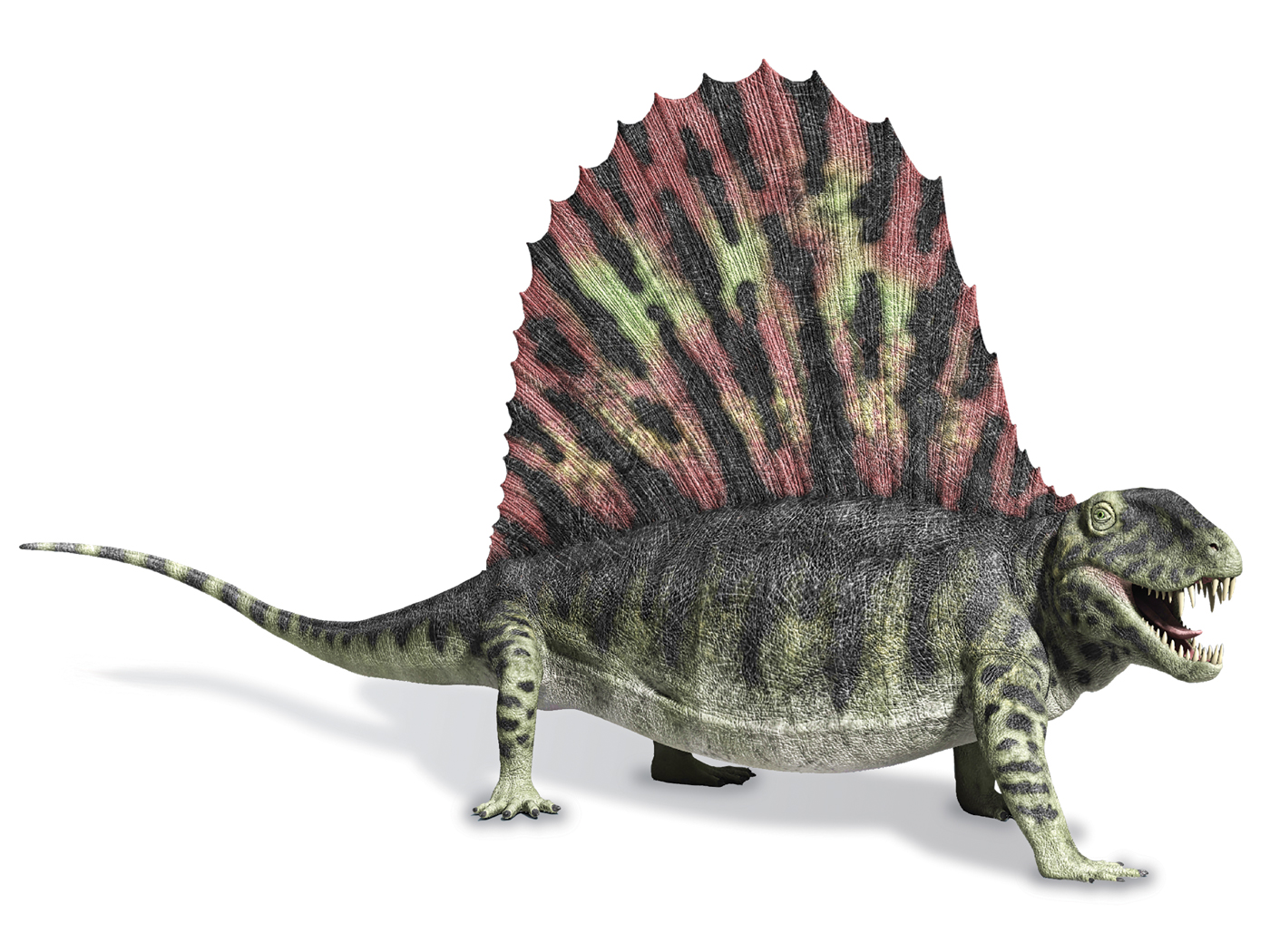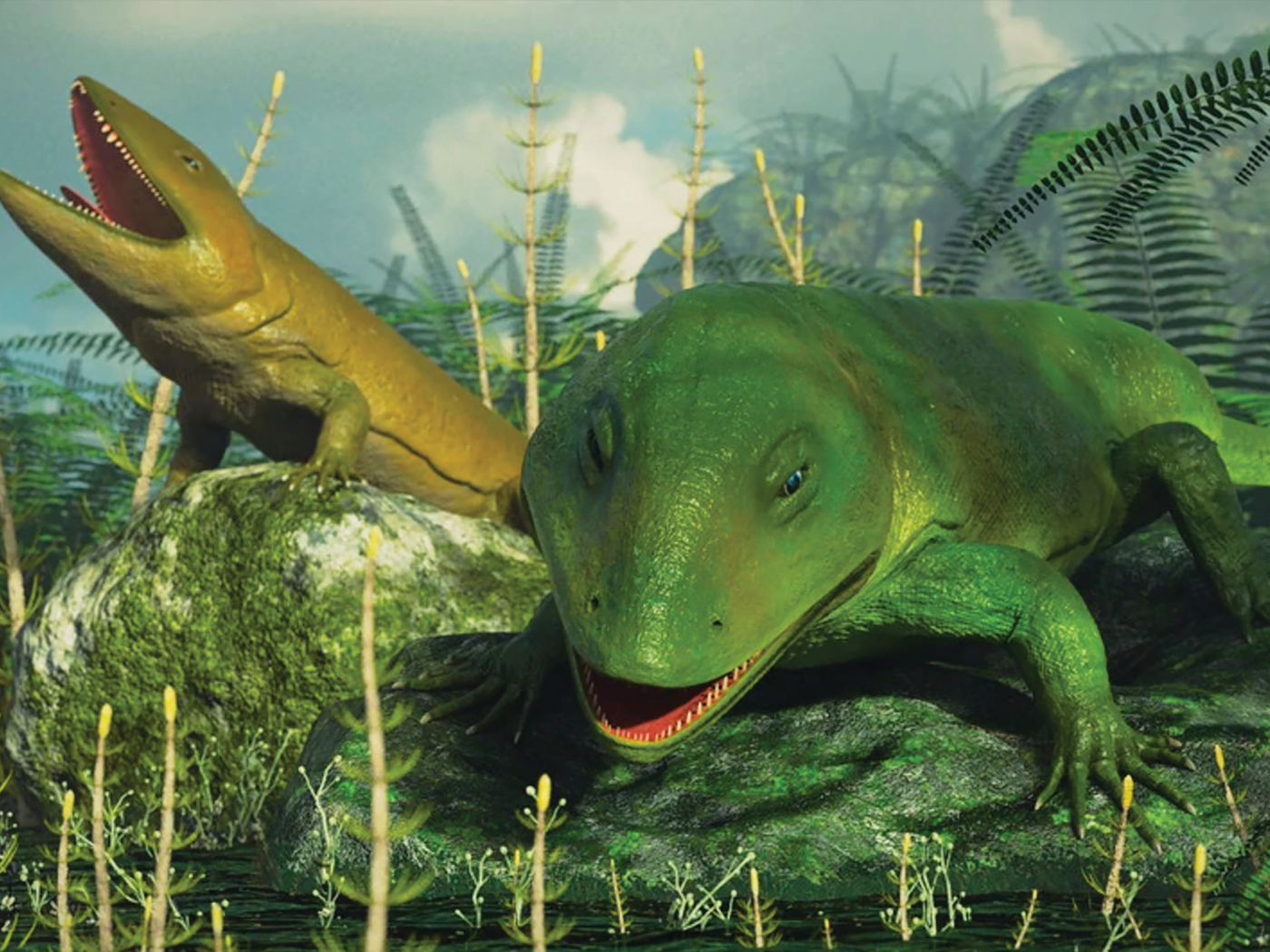An article entitled "Evolution and the Human Tail" by Dr. Fred D. Ledley appeared in the May 20, 1982, issue of The New England Journal of Medicine. The publication of this article apparently served as the source of a whale of a tale, for newspaper articles based on Ledley's publication appeared all over the United States. One of these articles which came to our attention had a headline typically associated with this story: "Baby's Tail Lends Evolution Support." The article stated that "The birth of a child with a tail is a rare glimpse of 'the relation between human beings and their primitive ancestors,' a doctor says." Later on, Ledley is quoted as stating that "Even those familiar with evolution are rarely confronted with the relation between human beings and their primitive ancestors on a daily basis. The caudal appendage brings this reality to the fore and makes it tangible and inescapable."
Thus, the reality of the fact of evolution is made tangible and inescapable, according to Dr. Ledley, by the birth of a baby with a tail. This is indeed the final conclusion stated by Ledley in his article. One needs only to read this article, however, to learn that Ledley himself has admitted that this may not be so. Earlier in the article (p. 1213), after quoting Darwin who said that "We thus learn that man is descended from a hairy quadruped furnished with a tail," Ledley states "When the caudal appendage is critically examined, however, it is evident that there are major morphologic differences between the caudal appendage and the tails of other vertebrates. First of all, the caudal appendage does not contain even rudimentary vertebral structures.… Secondly, the appendage is not located at the caudal terminus of the vertebral column. It is possible that this structure is merely a dermal appendage coincidentally located in the caudal region. This possibility cannot be excluded" (emphasis added).
How can it be said that the presence of this "tail" brings us tangibly and inescapably to the reality of evolution if we cannot exclude the possibility that it is nothing more than a dermal appendage coincidently located in the caudal region? As a matter of fact, even a superficial reading of Ledley's article makes clear that this so-called tail was no tail at all but was nothing more than an anomalous growth coincidentally located in the caudal region.
Case Description
The infant was normal in every way except for the presence of the appendage. The appendage was slightly more than two inches long and had a diameter at the base of about 1/4 inch. It was located adjacent to the sacrum and was offset from the mid-line about 1/2 inch. The appendage had a soft fibrous fatty core and was covered with skin of normal texture. There were no bony or cartilaginous elements in the appendage and it was found to have no connection to vertebral structures. X-rays of the spine were normal. The appendage was removed surgically under a local anesthetic.
Ledley's Interpretation of the Appendage
The boichemistry of man is remarkably similar to that of the apes and, in fact, is very similar to that of all other living creatures (This is, by the way, precisely what creation scientists would predict). What, then, accounts for the profound morphological differences between man and the apes and all other creatures? Obviously the differences do not reside in the genes that code for proteins, but must reside in other genetic characteristics.
In seeking to explain evolution, many evolutionists are now suggesting that much of evolution is due to mutations in regulatory genes, genes that do not affect the structures of proteins but which are believed to control the temporal, spatial, or proportional relations between developmental structures and events. Ledley apparently believes that the human "tail" results from such a mutation. Ledley states "In modern theory the parallels between ontogeny and phylogeny derive from the ability to trace the phenotypic expression [external morphological change] of developmental mutations to specific stages of embryonic development at which differentiation occurs between largely homologous molecular and morphologic structures."
Later, Ledley goes on to say that "The modern understanding of teratology [the study of anomalous malformations] and tail formation finds nothing unhuman or reversionary about the tail-like structure.…
The child with a tail is striking not because the tail is a 'reversion' but because it is not a reversion—because it is entirely consistent with our understanding of ontogeny and phylogeny, which places us in the midst of primate evolution. The occurrence of the caudal appendage, as well as the presence of a well-formed embryonic tail in a child, are testimony to the preservation of the structural elements necessary for tail formation in the human genome."
What is Ledley saying? What he seems to be saying is this: Although humans do not ordinarily have tails, and thus the genes for tails in humans are usually suppressed, yet humans still retain genes for tails—"structural elements necessary for tail formation in the human genome." According to Ledley, then, though the genes are not expressed and thus are useless baggage, we humans for many millions of years have been carrying those genes and faithfully reproducing them even though they are totally without function.
Presumably, then, we would also be carrying along in our human genetic apparatus other genes that are responsible for all other characteristics seen in our monkey-like ancestors but not seen in man. Following this thinking to its logical conclusion, the human genetic apparatus should still be carrying every gene ever possessed by any of our ancestors, even the genes that make a worm a worm, if indeed a worm was the ancestor of vertebrates.
Alternative Explanations
We would like to emphasize once again the fact that this appendage was not a tail. We have already quoted Ledley's own testimony that the "tail" did not contain even rudimentary vertebral structures. Ledley states in his article that there is no precedent for a vertebral tail without caudal vertebrae. The "tail" was offset from midline with no connection to vertebral structures and contained a soft fibrous fatty core. The resemblance to a tail was highly superficial.
Ledley reports that there are at least 30 mutations known in laboratory mice that affect tail morphology. Most mutant tails contain caudal vertebrae, but a particular mutant frequently has no caudal vertebrae, leaving a shortened boneless tail filament containing only loose connective tissue, blood vessels, and nerve fibers. Ledley compares this to the human "tail." These two conditions are in no way comparable, however. The normal mouse has a tail, and the mutant condition represents the loss of a normal structure. The human has no tail, and the caudal appendage represents the gain of an anomalous structure. Furthermore, the condition in the mouse is unquestionably due to a mutant gene and is, of course, inheritable. As Ledley states in his article, however, the caudal appendage in the human is a benign lesion which has never been reported to recur in families. If this caudal appendage were due to a mutation, the mutant gene would be passed on to offspring and would eventually be reexpressed in some of those offspring. This has never been known to occur. The anomaly is thus not due to a mutation but to some disarrangement that occurred during embryological development.
Rijsbosch describes a similar anomalous growth in a newborn male.1 He refers to it as an "unusual tumor in the sacrococcygeal area" with a core that consists entirely of highly vascularized fatty tissue. He reported that no osseous, cartilaginous, or muscular tissue was encountered and that the structure was in complete accord with the caudal formations in man described in medical literature. He reviewed the myths that had been associated with these and other anomalous growths, particularly in the Middle Ages.
Rijsbosch reviews a report by Schaeffer2 in which Schaeffer emphasized that "tail" formation is not necessarily an isolated phenomenon but may be associated with numerous other congenital anomalies. Schaeffer was able to derive from the medical literature a list of 35 deformities and anomalies which may exist concurrently with the caudal appendage. If, as Ledley maintains, "some malformations may in fact represent back mutations to an ancestral state" (see p. 1214 of his paper in The New England Journal of Medicine) and the caudal appendage is one of these, we should also be able to associate many of the 35 deformities reported by Schaeffer with other ancestral states. No such relationship can be inferred, however. These, as well as the caudal appendage, are nothing more than anomalous malformations not traceable to any imaginary ancestral state.
Rijsbosch also notes that M. Bartels3 had collected 116 reports of "tail" formation in humans. In cases where the sex was reported, 52 were males and 16 were females. If the caudal appendage represents a back mutation to an ancestral state, the human male must thus be somewhat closer to his monkey ancestor than the female since the condition occurs three times more frequently in males than in females!
Warkany reports that while most persons with caudal appendages showed normal general development, caudal appendages have been associated with such malformations as meningocele, spina bifida, chondrodystophy, cleft palate, hemangiomas, syndactyly, hypodactyly and heterotopic anus.4 Can evolutionists identify ancestral states with any of these malformations?
If malformations may possibly be due to the expression of genes inherited from distant ancestors but long suppressed, one can think of interesting suggestions. For example, some human females are born with mammary glands under the armpits. Some bats normally have their mammary glands in that region. Does that mean that human females are carrying long-suppressed genes for mammary glands under the armpits and we humans have a bat in our ancestry? Some human females are born with mammary glands in the groin region. Mammary glands normally occur in the groin region of some whales. Does that mean that human females still possess genes for mammary glands in the groin region that have been inherited from a whale ancestor? Mammary glands, as a matter of fact, have developed in humans in many places, including the back, arms, and legs. How can evolutionary theory help us explain that?
This paper in The New England Journal of Medicine thus represents simply another contribution to the mythology generated by the occurrence of malformations in the newborn.
References
1. J.K.C. Rijsbosch, Archivum Chirurgicaum Neetandicum, V. 29 (#4), pp. 261-268 (1977).
2. 0. Schaeffer, Arch. Anthrop,, 1891/1892, V. 20, p- 189.
3. M, Bartels, Arch. Anthrop., 1884, V. 15, p. 45.
4. J. Warkany, Congenital Malformations, Yearbook Medical Publishers, Chicago, 1971, p. 925.*Dr. Duane Gish is Vice President of the Institute for Creation Research.
















